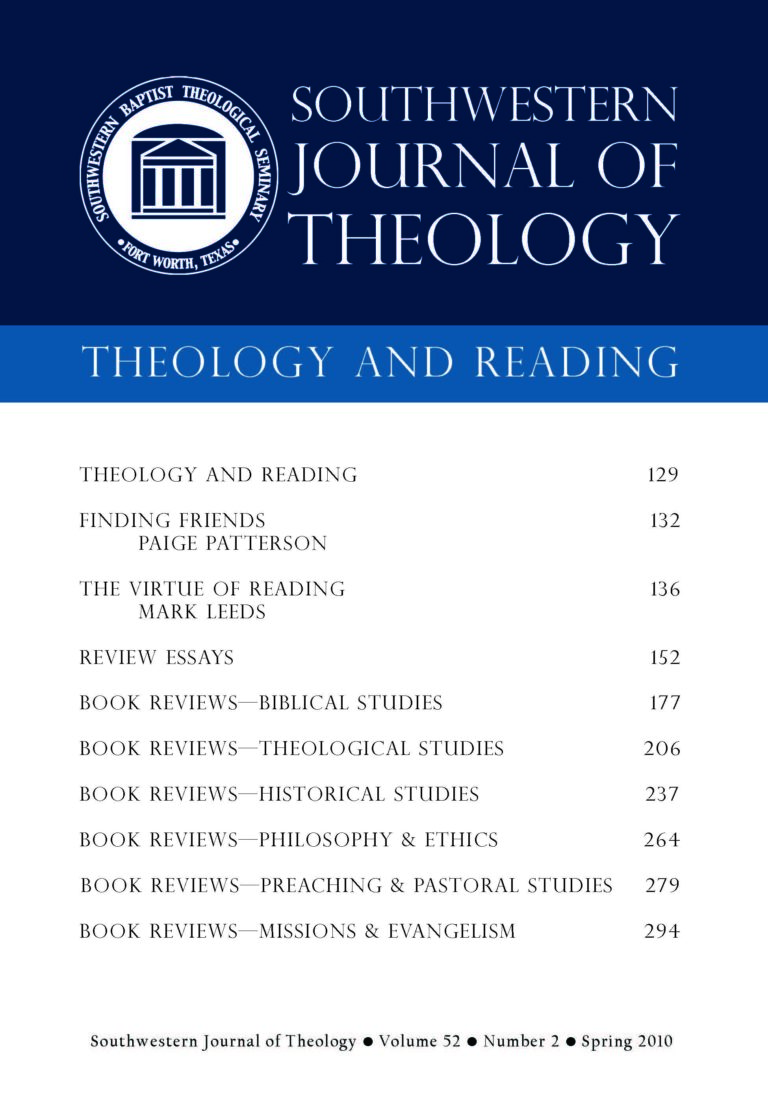
Theology and Reading
Southwestern Journal of Theology
Volume 52, No. 2 – Spring 2010
Managing Editor: Malcolm B. Yarnell III
By William R. Yount and Mike Barnett. Nashville: Broadman and Holman, 2007. 251 pages. Softcover, $24.99.
With their years of cross-cultural ministry experience and hearts that burn for the nations, the authorial partnership of Rick Yount and Mike Barnett in a book on cross-cultural discipling could only lead to a positive outcome. These men bring years of classroom experience to the table having instructed students, pastors, and missionaries around the world in the art of discipling. Called to Reach is the culmination of these years of discipling disciplers.
The text uses the Discipler’s Model, first developed by Yount more than twenty-five years ago, and the Teacher’s Triad, described by Yount in his earlier work Created to Learn (chap 11), as the framework upon which to build a crosscultural discipleship approach based on character development. After introducing the basics of cross-cultural discipling, Yount and Barnett describe seven different areas of character development devoting a chapter to each. The character traits are based on the elements of the Discipler’s Model: the Holy Spirit element is transformed into Spiritual Development; the Bible to Biblical Character; the Think element to Rational Character; the Needs element into Compassionate Character; the Values element into Impassioned Character; the Relate element into Relational Character; and the Growth element becomes Maturational Character. The final chapter synergizes all of the character traits and discusses the necessity of balance between the elements.
Each chapter begins with an overview of the characteristic to be discussed and what Yount and Barnett call “The Toxic Flip Side” of that characteristic, which is a short description of what it looks like not to have this character trait. Placed strategically within each chapter are pertinent illustrations drawn from the lives of the authors and missionaries they have known. These illustrations are one of the strengths of this treatise without which it would become a purely academic endeavor. Understanding how each character trait is manifested in real life situations underscores the importance of its development within those who disciple the followers of Christ. Yount and Barnett also add comments at the end of each other’s chapters to give their readers a fuller picture of where each stands and what important points they gleaned from their partner’s chapter.
One point of particular interest in this treatise is the development of spiritual character. This first characteristic comprises the circle around the rest of the model and involves “a perspective devoted to ongoing surrender to the Holy Spirit’s leadership” (15). The development of spiritual character and subsequent surrender to the Holy Spirit’s leading is portrayed as a necessary foundation for the other character traits. Throughout the remainder of the book, Yount and Barnett refer back to spiritual character and its relationship to each of the other characteristics.
Pulling together educational models, character development, missiological principles, and years of experience, these two cross-cultural disciplers succeed not only in presenting a wise model for equipping cross-cultural disciplers but also in sharing God’s heart for the nations. This volume is an excellent resource for anyone seeking to minister in a cross-cultural situation whether it be at home or abroad.





